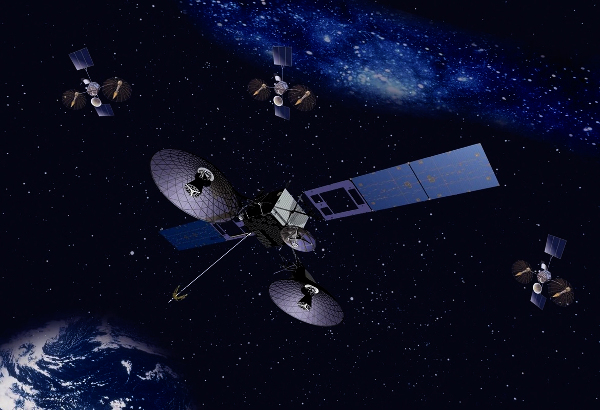India plans to ring in its own era of space-to-space tracking and communication of its space assets this year by putting up a new satellite series called the Indian Data Relay Satellite System.
The IDRSS is planned to track and be constantly in touch with Indian satellites, in particular those in low-earth orbits which have limited coverage of earth.
In the coming years, it will be vital to Indian Space Research Organisation (ISRO), whose roadmap is dotted with advanced LEO missions such as space docking, space station, as well as distant expeditions to moon, Mars and Venus. It will also be useful in monitoring launches, according to K. Sivan, ISRO Chairman and Secretary, Department of Space.
The first beneficiary would be the prospective crew members of the Gaganyaan mission of 2022 who can be fully and continuously in touch with mission control throughout their travel.
“When we have the Gaganyaan mission we want it to be covered and be visible 100% so that action can be taken in any exigency,” he said.
Work initiated
Work on the two IDRSS satellites planned initially has begun. The first of them will be sent towards the end of 2020. It will precede the pre-Gaganyaan experimental unmanned space flight which will have a humanoid dummy. A second one will follow in 2021. The two will offer near total tracking, sending and receiving of information from the crew 24/7.
Older space majors such as the U.S. and Russia started their relay satellite systems in the late 1970s-80s and a few already have around 10 satellites each. They have used them to monitor their respective space stations Mir and the International Space Station, and trips that dock with them, as well as the Hubble Space Telescope.
New data relay satellites to keep Gaganyaan crew in touch with Earth
Dr. Sivan said IDRSS satellites of the 2,000 kg class would be launched on the GSLV launcher to geostationary orbits around 36,000 km away. In such apparently fixed orbits, they would be covering the same area on earth. A satellite in GEO covers a third of the earth below and three of them can provide total coverage.
‘IDRSS is imperative’
During the launch of the human mission and also when the crew craft orbits earth from a distance of 400 km, at least one ground station must see and track it. But with available ground stations, that would not be the case. Without data relay satellites, ISRO would have to create a large number ground stations everywhere or hire them globally and yet the crewed spacecraft would not be visible all the time.
“We require the IDRSS system when our astronauts are in space. But I would prefer the relay spacecraft to be in place even before we launch the unmanned mission,” Dr. Sivan said.
While the U.S. is putting up its third-generation advanced fleet of TDRS (Tracking & Data Relay Satellites), Russia has its Satellite Data Relay Network and Europe is building its own European Data Relay System. China is into its second generation Tianlian II series.
Source: The Hindu
Image Courtesy: General Dynamics Mission
You may also like
-
New Heat-Based Approach To Cancer Treatment Can Reduce Chemotherapy Doses
-
Scientists Take A Major Step Towards Unification Of Classical & Quantum Gravity
-
India Graphene Engineering and Innovation Centre (IGEIC) Under the Vision of Viksit Bharat@2047 Launched
-
New High-Performance Gas Sensor can Monitor Low Level Nitrogen Oxides Pollution
-
Antidepressant Drug can be Repurposed for Treating Breast Cancer
